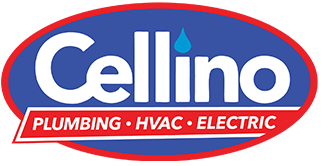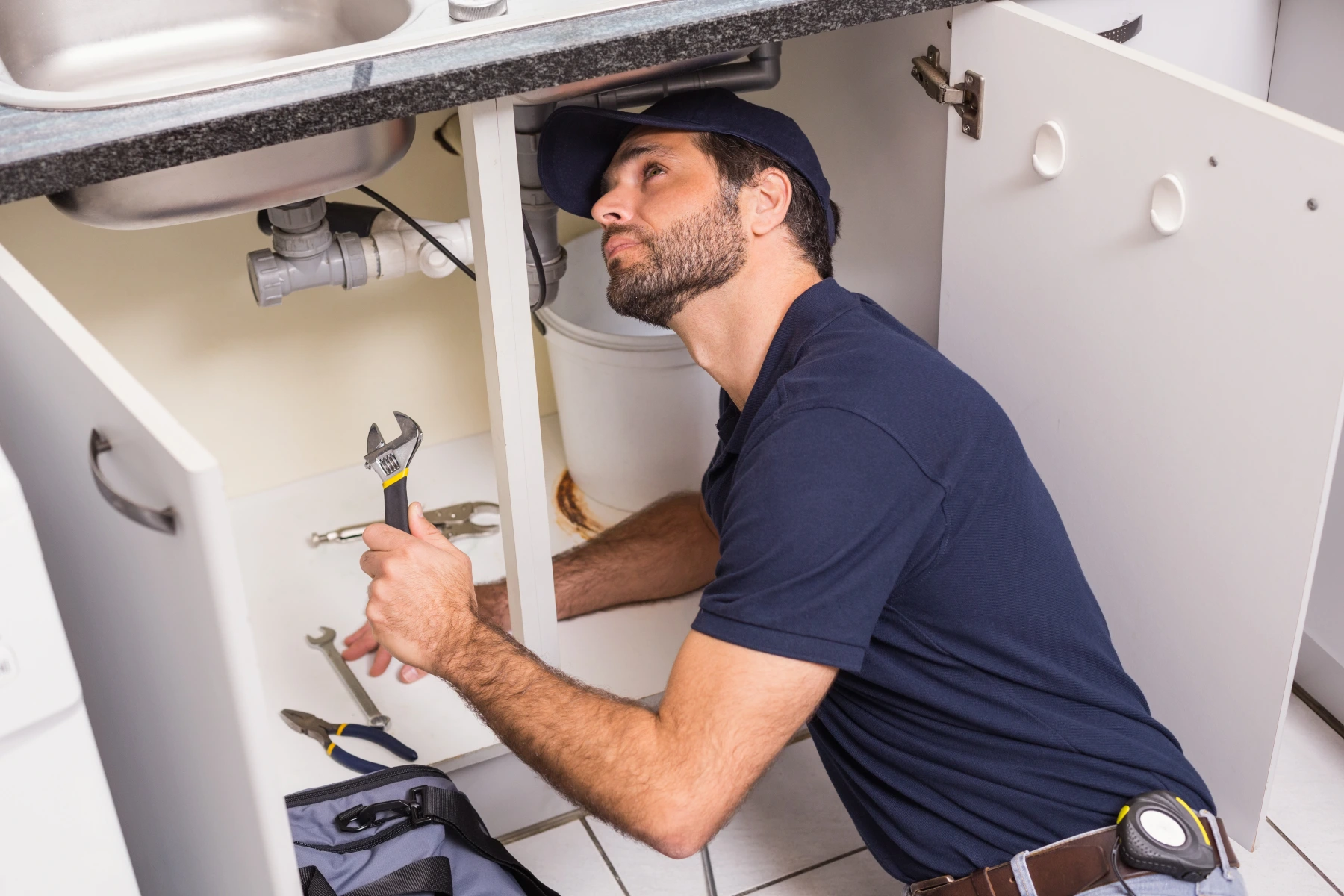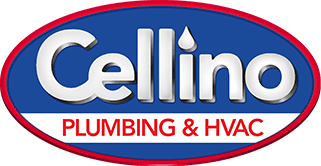Imagine your clean drinking water being contaminated by sewage or other harmful substances. Sounds scary (and gross), right? That’s the reality of backflow — a serious plumbing issue that can pose health and safety risks. And that’s where backflow testing comes in!
Older plumbing systems are particularly vulnerable to backflow due to the degradation of pipes, valves, and other components. That’s why it’s crucial to understand the risks and take preventive measures to protect your property.
In this blog, we’ll have our expert plumbers in Cellino Plumbing, Heating & Cooling share their knowledge about backflow assembly testing and more!
The Silent Danger of Aging Plumbing
Older plumbing systems are more susceptible to backflow due to the deterioration of their components. Over time, pipes can become corroded, materials can break down, and valves may malfunction.
When these components degrade, they can create conditions that allow water to flow backward, potentially contaminating your clean water supply.
For example, if a pipe becomes corroded and develops a hole, water can seep in from a contaminated source. Similarly, a faulty valve may allow water to flow in the wrong direction, sending contaminated water into your home.
Common Causes of Backflow in Older Plumbing Systems
Backflow can be caused by several factors, including:
Pressure changes. Fluctuations in water pressure can force water to flow backward. For instance, if a nearby hydrant is opened, it can create a sudden drop in pressure, leading to backflow.
Blocked pipes. Clogged pipes can create back-pressure, causing water to flow in the wrong direction. This can happen due to a variety of reasons, such as grease buildup, tree root intrusion, or mineral deposits.
Cross-connections. If your plumbing system has cross-connections between potable water and non-potable water sources, backflow can occur. This can happen, for example, if a garden hose is connected to a potable water source without a backflow preventer valve.
What is a Backflow Test
Backflow testing is a process to ensure that water flows in the correct direction through your plumbing system. It’s particularly important for commercial properties and buildings with complex plumbing systems, but it can also be beneficial for residential properties.
How much does backflow testing cost?
The cost of backflow testing can vary depending on several factors, including:
- The size and complexity of your plumbing system
- The location of your property
- The number of backflow prevention devices you have
- The specific requirements of your local municipality
Generally, you can expect to pay anywhere from $50 to $200 for a basic backflow test. However, for larger or more complex systems, the cost may be higher.
You can also purchase a backflow test kit. However, it’s important to note that these kits are typically designed for homeowners to perform basic checks on their own backflow prevention devices. They may not provide the same level of accuracy or detail as a professional backflow inspection conducted by certified backflow testers.
If you have any concerns about the condition of your backflow prevention devices, it’s highly recommended to hire a certified plumber to perform a thorough inspection. If you’re searching for ‘backflow inspection near me’ or ‘backflow testing near me’, Cellino Plumbing, Heating & Cooling can cover all your backflow plumbing needs.
Types of Backflow: Understanding the Risks
There are two main types of backflow:
- Back-pressure: This occurs when there’s a blockage or restriction in the plumbing system that causes water to flow backward. For example, if a pipe becomes clogged, it can create back-pressure and force water to flow in the opposite direction
- Back-siphonage: This happens when a vacuum is created in the plumbing system, pulling water backward from a contaminated source. This can occur if a pipe is broken or if a faucet or fixture is left open.
Both back-pressure and back-siphonage are more common in older plumbing systems due to the degradation of pipes, valves, and other components.
The Important Role of Backflow Prevention Devices
Residential backflow prevention devices are essential for protecting your home and community from contaminated water. These devices act as barriers, preventing water from flowing backward into your plumbing system.
Here’s how they work:
Check valves: These devices have a one-way flap that allows water to flow in only one direction. When water tries to flow backward, the flap closes, preventing contamination.
Reduced pressure principle backflow preventer devices: These devices create a vacuum zone that stops water from flowing backward. They are usually used in commercial and industrial settings. However, they can also be installed on residential properties.
Older plumbing systems are particularly vulnerable to backflow. Installing backflow prevention devices can greatly reduce the risk of contamination and protect your property and its occupants.
Preventing Backflow: A Proactive Approach
To reduce the risk of backflow in your older plumbing system, it’s essential to take preventive measures. Here are some practical tips:
- Regular testing. A backflow prevention device should be tested annually to ensure they are working properly. Our experienced plumbers at Cellino Plumbing, Heating & Cooling can conduct these inspections for you
- Replace outdated materials. If your plumbing system is old and outdated, consider replacing it to reduce the risk of backflow. Cellino’s reliable team will assess the condition of your system and recommend appropriate upgrades.
- Install backflow preventers. If your system doesn’t already have backflow preventers installed, we can help you select and install the device needed.
By following these tips and working with a qualified plumber, you can greatly reduce the risk of backflow in your home.
Signs of Backflow: Watch Out for These Red Flags
If you notice any of the following, it could signal a backflow problem:
Discolored water. If your water has an unusual color, such as brown or rusty, it could be a sign of backflow.
Foul odors. A foul odor coming from your faucets or drains can be a sign of backflow.
Low water pressure. Reduced water pressure can be a symptom of a blockage or other plumbing issue that could lead to backflow.
If you notice any of these signs, it’s important to address the issue promptly to prevent damage and contamination.
The Importance of Professional Backflow Testing
To ensure the safety of your property and community, it’s essential to have your plumbing system inspected for backflow. A plumber with backflow certification can conduct backflow tests to identify any potential issues and recommend appropriate solutions.
At Cellino Plumbing, Heating & Cooling, our experienced plumbers have the expertise to perform accurate backflow testing and provide reliable recommendations and solutions.
Why Replacing Outdated Plumbing is Key to Long-Term Prevention
If your plumbing system is old and outdated, it may be more susceptible to backflow and other problems. Replacing your plumbing can be a significant investment, but it can also provide long-term benefits, such as:
Reduced risk of backflow. Newer plumbing systems are less likely to develop leaks or other issues that can lead to backflow.
Improved water quality. Replacing old pipes can help improve the quality of your drinking water.
Increased energy efficiency. Modern plumbing fixtures and appliances are more efficient than older models.
Increased property value. Updated plumbing can increase the value of your home
Our team at Cellino Plumbing, Heating & Cooling can assess the condition of your plumbing system and recommend the best course of action.
Protect Your Home with Regular Backflow Testing and Maintenance
Backflow is a serious issue that can pose health and safety risks to you and your family. By understanding the causes of backflow and taking preventive measures, you can protect your property, community, and family.
Regular backflow testing and maintenance are essential to stop backflow in its tracks and ensure the safety of your plumbing system.Contact Cellino Plumbing, Heating & Cooling today at (716) 557-1222 to schedule a backflow test or backflow plumbing inspection. We have experienced and capable plumbers who can provide advice and recommendations to keep your home’s plumbing system safe and healthy.




